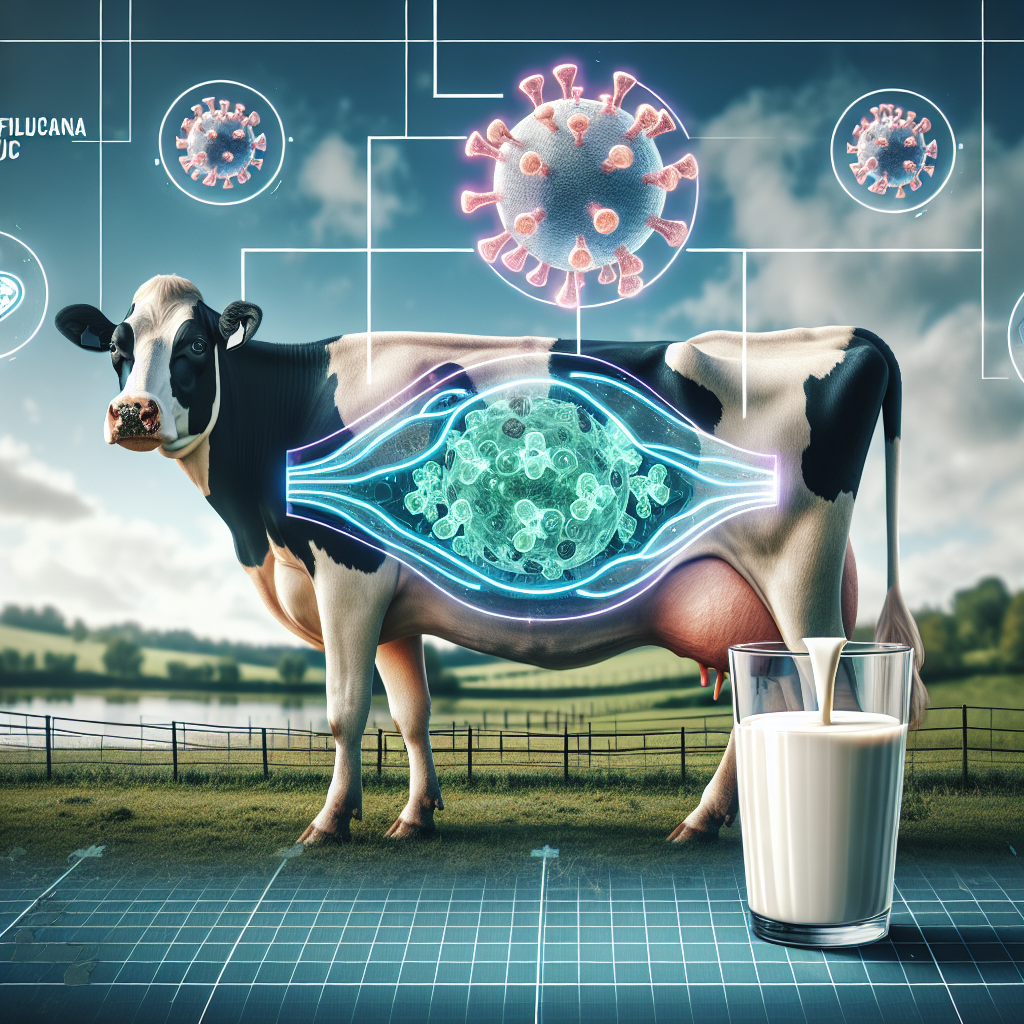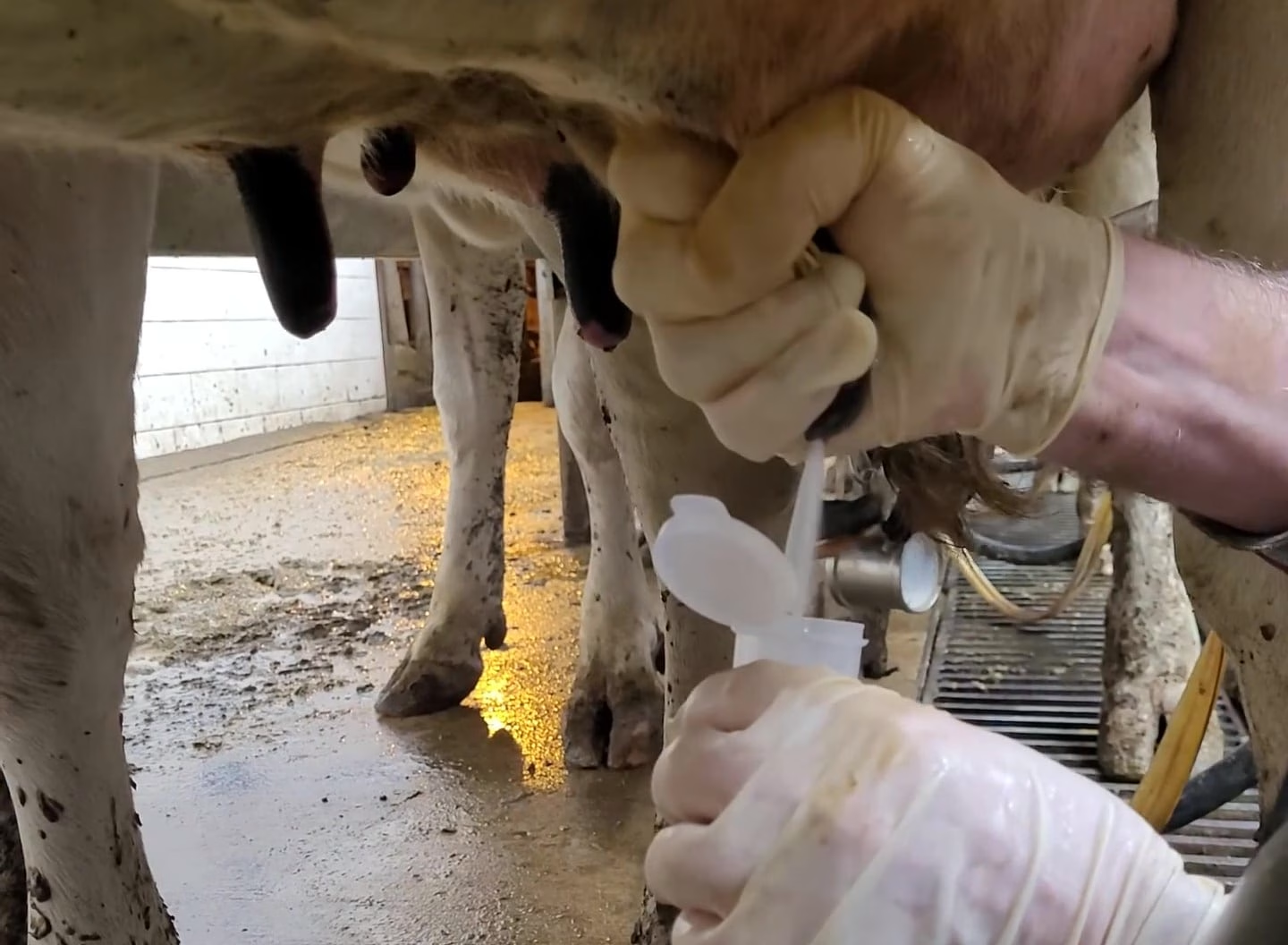Canada faces a new threat as H5N5 bird flu hits a backyard farm in Newfoundland. With its ability to infect multiple species and potential for zoonotic transmission, this outbreak raises alarm bells for the poultry industry, wildlife conservation, and public health. How will Canada respond to this evolving challenge?
Summary:
Canada has reported an outbreak of highly pathogenic H5N5 avian influenza on a backyard poultry farm in Gander Bay, Newfoundland and Labrador. This new strain, related to the H5N1 virus, has raised concerns due to its ability to infect various bird species and mammals. The Canadian Food Inspection Agency has implemented strict control measures, while the poultry and dairy industries are on high alert. Although no human cases have been reported, public health officials are closely monitoring the situation. The outbreak highlights the interconnectedness of animal, human, and environmental health, emphasizing the need for a One Health approach in managing zoonotic diseases. As Canada grapples with this challenge, efforts are underway to enhance surveillance, develop vaccines, and improve biosecurity measures across the agricultural sector.
Key Takeaways:
- Highly pathogenic H5N5 avian influenza detected in a backyard poultry farm in Newfoundland and Labrador, Canada.
- The virus has infected various bird species and mammals, raising concerns about cross-species transmission.
- Canadian authorities have implemented strict control measures and biosecurity protocols.
- No human cases reported, but public health officials are vigilantly monitoring the situation.
- Poultry industry on high alert; over 12.9 million birds affected by avian influenza outbreaks since 2022.
- Dairy industry taking proactive measures due to recent H5N1 cases in U.S. dairy herds.
- The outbreak underscores the importance of a One Health approach to managing zoonotic diseases.
- Efforts are underway to develop vaccines and improve surveillance techniques.
- The situation highlights the interconnectedness of global agricultural systems and trade networks.
- Ongoing research focuses on genomic surveillance, rapid diagnostics, and predictive modeling to manage future outbreaks.

In a significant development for Canadian agriculture and public health, the World Organisation for Animal Health(WOAH) reported today that Canada has detected an outbreak of highly pathogenic H5N5 avian influenza on a non-commercial backyard layer poultry farm in Gander Bay, Newfoundland, and Labrador. This outbreak marks a critical event in the ongoing global battle against avian influenza, raising concerns about its potential impact on the poultry industry, wildlife, and human health.
The Outbreak: Details and Immediate Response
The Canadian Food Inspection Agency (CFIA) confirmed the presence of H5N5 in a backyard flock in Gander Bay, Newfoundland, and Labrador on February 12, 2025. The CFIA has swiftly established a primary control zone (PCZ) in Gander Bay, implementing strict movement restrictions on birds, their products, and byproducts.
H5N5: A New Player in the Avian Influenza Landscape
The H5N5 virus identified in this outbreak is similar to strains circulating in Canada since early 2023. Initially detected in wild birds across eastern Canada, including Newfoundland and Labrador, Nova Scotia, New Brunswick, Prince Edward Island, and Québec, H5N5 has now made the concerning jump to domestic poultry.
Wildlife Reservoirs and Cross-Species Transmission
One of the most alarming aspects of the H5N5 outbreak is its demonstrated ability to infect various species. The Canadian Wildlife Health Cooperative (CWHC) has reported H5N5 infections in several wild bird species, including gulls, northern fulmars, and dovekies. More concerning is the virus’s ability to infect mammals, with cases reported in raccoons, striped skunks, and red foxes across eastern Canada.
“It’s a new virus in name, but it’s very closely related to H5N1 avian influenza virus, which has been circulating in our region for over a year now.” – Megan Jones, director of the Canadian Wildlife Health Cooperative for the Atlantic region, and an assistant professor at the Atlantic Veterinary College.
Implications for the Poultry and Dairy Industries
While the current outbreak is in a backyard flock, the poultry industry remains highly alert. The CFIA reports that as of November 26, 2024, there were 69 active infected premises across Canada, and over 12.9 million birds have been impacted by avian influenza outbreaks since 2022.
To put this outbreak in context, it’s important to understand the historical impact of highly pathogenic avian influenza (HPAI) outbreaks on poultry populations worldwide:
| Period | Virus Subtype | Poultry Lost (millions) | Most Affected Regions |
|---|---|---|---|
| 2005-2010 | H5N1 | 55.2 | Asia |
| 2011-2019 | Multiple H5 | 139.9 | Various |
| 2020-2022 | H5N1, H5N8 | 193.9 | Europe, North America |
This table illustrates the increasing severity of HPAI outbreaks over time, with the current wave (2020-2022) having the most significant impact on poultry populations.
Public Health Implications
While H5N5 has not been detected in humans in Canada, the potential for zoonotic transmission remains a concern. The Centers for Disease Control and Prevention (CDC) reports that while the current public health risk is low, they oversee the situation and work with states to monitor people with animal exposures.
“For wildlife, it’s a bit of a precarious situation — obviously, it’s highly contagious. The virus can survive for months in ideal conditions.” – Jory Mullen, Rouge National Urban Park ecosystem scientist.
Biosecurity Measures and Prevention Strategies
In light of the outbreak, the CFIA and provincial authorities are reinforcing the importance of strict biosecurity measures for all poultry producers, regardless of the size of their operations. Key recommendations include:
- Preventing contact between poultry and wild birds or other animals
- Frequent cleaning of coops, feeders, waterers, and personal protective equipment
- Limiting visitors to poultry facilities
- Keeping new birds separate from existing flocks for at least 30 days
- Promptly reporting any signs of illness to the CFIA or provincial animal health authorities
Vaccination and Research Efforts
There are no licensed vaccines specifically for H5N5 in poultry or livestock. However, the outbreak has intensified calls for accelerated vaccine development against emerging avian influenza strains.
Economic and Trade Considerations
The detection of H5N5 in domestic poultry has led to the WOAH reclassifying Canada’s avian influenza status as “Not Free.” While the current outbreak’s non-commercial nature may mitigate immediate trade impacts, the situation could have broader implications if the virus spreads to commercial operations.
Dairy Industry Preparedness
In light of the H5N5 outbreak in poultry and the recent H5N1 cases in U.S. dairy herds, Canadian dairy farmers are taking proactive measures to protect their livestock. The Canadian dairy industry has implemented several strategies to prevent the introduction and spread of avian influenza in cattle:
- Enhanced biosecurity protocols: Farms limit visitor access, ensure workers wear clean work clothes, and increase the use of personal protective equipment.
- Surveillance and testing: The CFIA has extensively tested raw and pasteurized milk samples across Canada. As of January 31, 2025, all 1,944 samples tested have been negative for avian influenza.
- Import restrictions: Canada has implemented stricter import controls for cattle from the United States, requiring all lactating dairy cows to test negative for avian influenza before entering the country.
- Closed herd management: Many Canadian dairy farms maintain closed herds to reduce the risk of disease introduction.
- Environmental factors: Canada’s colder climate and indoor housing systems for dairy cattle may provide some natural protection against the spread of avian influenza.
The One Health Approach and Its Relevance to the H5N5 Outbreak
The H5N5 outbreak underscores the importance of a One Health approach, which recognizes the interconnectedness of human, animal, and environmental health. As Canada faces this new challenge, the agricultural sector, public health officials, and researchers are working together to develop innovative solutions. These efforts include:
- Advanced genomic surveillance to track viral evolution
- Development of rapid, on-farm diagnostic tools for early detection
- Research into cross-protective vaccines that could provide immunity against multiple influenza strains
- Implementation of AI-driven predictive models to forecast potential outbreaks
As the situation evolves, Canadian authorities remain committed to transparency, rapid response, and international cooperation. The lessons learned from this H5N5 outbreak will undoubtedly shape future strategies for managing zoonotic diseases and protecting animal and human health in an increasingly interconnected world.
Learn more:
- California Bans Poultry and Dairy Cattle Exhibitions Amid H5N1 Avian Flu Outbreak: What Farmers Need to Know
- H5N1 Bird Flu Strikes Over 930 U.S. Dairy Farms, Raising Mutation Fears
- Avian Flu Hits Nevada Dairy Cows: Industry on High Alert
 Join the Revolution!
Join the Revolution!
Bullvine Daily is your essential e-zine for staying ahead in the dairy industry. With over 30,000 subscribers, we bring you the week’s top news, helping you manage tasks efficiently. Stay informed about milk production, tech adoption, and more, so you can concentrate on your dairy operations.







 Join the Revolution!
Join the Revolution!





